
Why Belarus is Russia's main ally and does it have enough troops to attack Ukraine
Russia has few allies who openly support Putin's criminal actions. Besides Iran, North Korea, and a handful of terrorist groups, the Lukashenko regime has always been loyal, not only supporting the Russian president but also helping him to launch his unjustified assault on Ukraine
Belarus is three times smaller than Ukraine, with one third of its territory covered by forests. The county is home to about 9.5 million people, with at least half a million people involved in its armed forces to varying degrees. Espreso will explain how Belarus became Russia’s main ally, how strong its army is, and to what extent Lukashenko's regime poses a threat to Ukraine's security.
The article covers the following:
- how Belarus became an "independent" satellite of Russia;
- how Russia uses Belarus for its own purposes;
- how strong the Belarusian army is;
- whether Belarus can attack Ukraine.
How Belarus became an "independent" satellite of Russia
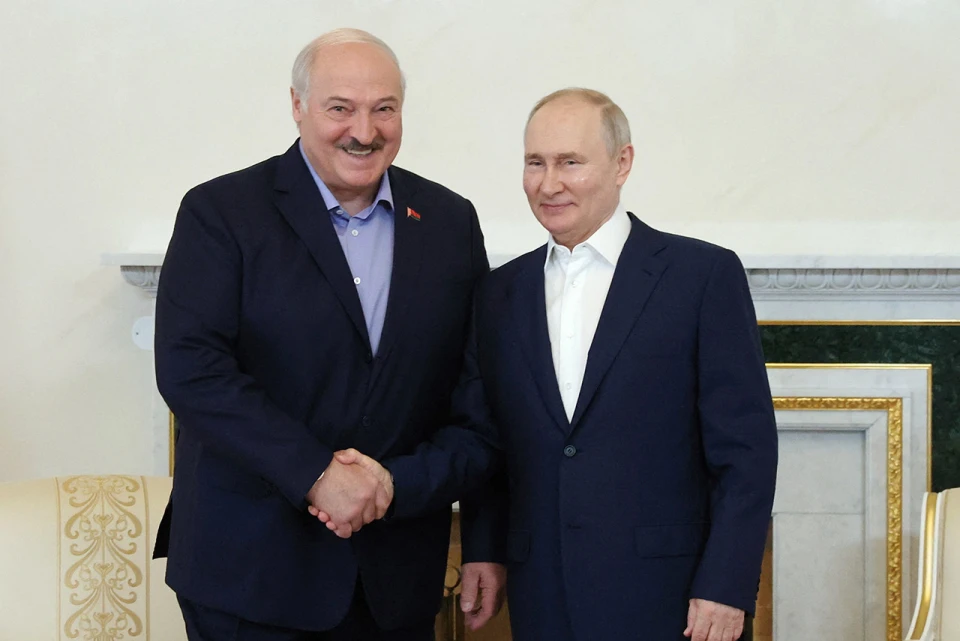
Belarus has a long and complicated history. Like Ukrainians, Belarusians have suffered from the influence of foreign powers for centuries: first the Grand Duchy of Lithuania and the Moscow Duchy, and then the Polish-Lithuanian Commonwealth, the Russian Empire, and eventually the Soviet Union. For many years, Russians cherished the myth of the "three fraternal Slavic peoples" who were "born" in the same cradle of Kievan Rus. Interestingly, however, until the end of the 19th century, Belarusians did not identify themselves as Belarusians, but were called Litvins. For nearly 600 years, the Lithuanian-Belarusian state existed on the territory of modern Belarus, forming a symbiosis of two cultures, later joined by the Poles. Therefore, the intelligentsia of White Ruthenia identified themselves as Litvins for a long time, until this paradigm was changed to a pro-Russian one, where the historical emphasis was shifted to the times of the Old Russian state.
In the last years of the First World War, Belarusians awoke for the first time as a separate nation, seeking to form an independent state. They succeeded de jure, but not de facto. On March 25, 1918, the independent Belarusian People's Republic (BPR) was proclaimed. Ukraine was the first foreign state to recognize the BPR. However, as in the case of Ukraine, the Belarusians failed to deter the Bolshevik offensive and found themselves under the yoke of the USSR. At least they were able to defend their separate Soviet Union republic, which allowed them to declare their independence after the collapse of the communist bloc.
On July 27, 1990, the Supreme Soviet of the BSSR adopted the Declaration of State Sovereignty. One day later than Ukraine, on August 25, 1991, the Supreme Soviet of Belarus proclaimed the country's independence from the USSR. On September 19, the Belarusian Soviet Socialist Republic was renamed the Republic of Belarus. Three years later, Belarusians adopted the Constitution, according to which the country was proclaimed a unitary democratic social state based on the rule of law. Belarus became a presidential republic. The first election was won by what eventually became known as "Europe's last dictator," Alexander Lukashenko. He has held office for the longest duration among all Eurasian heads of state, excluding monarchs and the Supreme Leader of Iran, with a tenure spanning 29 years. Therefore, 1994 was the last election in Belarus that the international community recognized as free. All subsequent elections were a farce of "Batka" (or “father” in English) as Belarusians call him.
Lukashenko quickly curtailed democratic institutions and took power into his own hands. In 1995-1996, he held two referendums, which resulted in the expansion of presidential powers, dissolution of the parliament, granting Russian the status of the state language, and the return of modified Soviet symbols (instead of the white-red-white flag and the Pogonia coat of arms, which originated from the Grand Duchy of Lithuania and were used as official symbols in the BNR and in the early years by the Belarusian Republic). The legality of this referendum is still in question, as the questions posed violated the Constitution and other laws of Belarus. In addition, there were violations during the referendum. Therefore, the "return to the USSR" in Belarus did not happen because of the desire of the Belarusians themselves, but because of the will of one person - Alexander Lukashenko.
Gradually, year after year, opponents of his regime disappeared under mysterious circumstances and their bodies have not yet been found. Subsequently, the two-term limit on the presidency was lifted and, in fact, Lukashenko turned into a monarch with unlimited power. The legislative branch of power, the parliament, has become a formality, with individuals loyal to the regime being elected. Not to mention the judiciary, which fully supports all decisions of its president. By the way, Belarus is the only country in Europe that allows the death penalty.
Having gained full power in his country, "Batka" set his sights on a bigger one - the "all-union" one. In 1997, Lukashenko and Russian President Boris Yeltsin signed a treaty on the formation of a union state consisting of Russia and Belarus. However, Belarus was saved from actual disappearance from the world map by the Belarusians themselves, who organized mass protests known as the Minsk Spring. As a result of the protests, the final content of the Union State agreement was changed, and Belarus retained its external sovereignty. Effectively, such a supranational association was formed in 1999, and from 2000 to the present, Alexander Lukashenko has been the chairman of the Supreme State Council of the Union State. However, for a long time, this union did not progress toward its main goal of uniting the two countries into one. This stagnation was influenced by a new strong player on the political chessboard – Vladimir Putin.
The young Lukashenko dreamed of becoming president of a new great power, as Boris Yeltsin was not very popular at the time. However, after Yeltsin resigned from the presidency in 2000, Vladimir Putin was elected as his successor, forcing "Batka" to cancel his plans and maintain a balance between Belarus' independence and the former KGBist's increasing pressure for further integration between the two countries into a Union State, where the ambitious Putin, not Lukashenko, was to become the head.
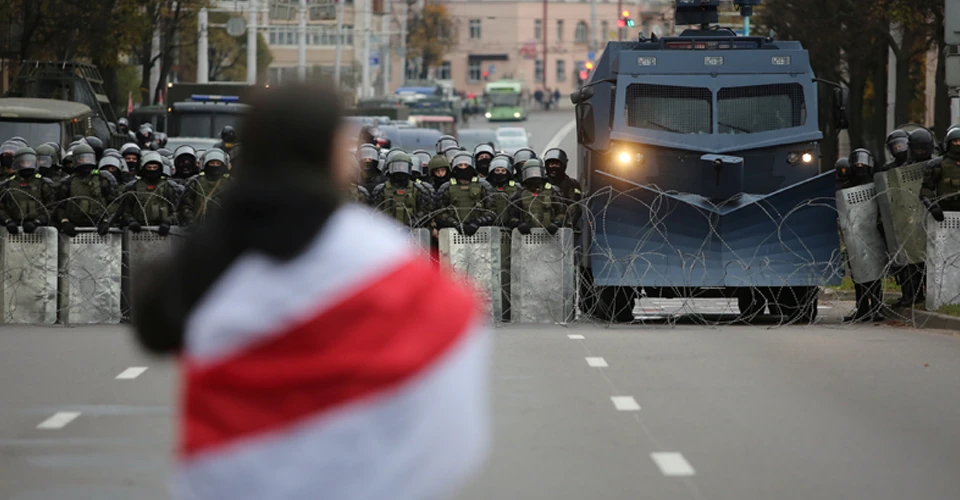
For a long time, Lukashenko managed to maneuver between deepening relations with Russia and flirting with the West or China and India. However, the biggest challenge to his power came in the 2020-2021 protests, which took place due to another unfair presidential election, where the opposition was deprived of the opportunity to compete with the "last dictator of Europe."
Although similar demonstrations had been taking place in previous elections in Belarus, this one turned into a massive wave involving millions of Belarusians across the country (according to Chatham House, one in five Belarusians). The new young generation wanted change and to finally replace "Batka," but he desperately clung to his power and began to break up rallies, cut off the Internet, and further disrupt the opposition's activities with brute force. According to certain versions, Russia's special services helped coordinate the suppression of the protests. Over 1,300 people were injured, 11 were killed, and 30,000 protesters were arrested. In the end, Belarusians failed to change the government because they were not prepared for a fight, as seen in Ukraine during the Revolution of Dignity.
However, these protests significantly weakened Lukashenko's grip on power. He became vulnerable to Russian encroachment and, in essence, was "indebted" to Putin, who assisted "Batka" in remaining in power. This is one of the significant reasons why the Belarusian authorities permitted and continue to allow Russians to launch attacks on Ukraine from their territory.
How Russia uses Belarus for its own goals
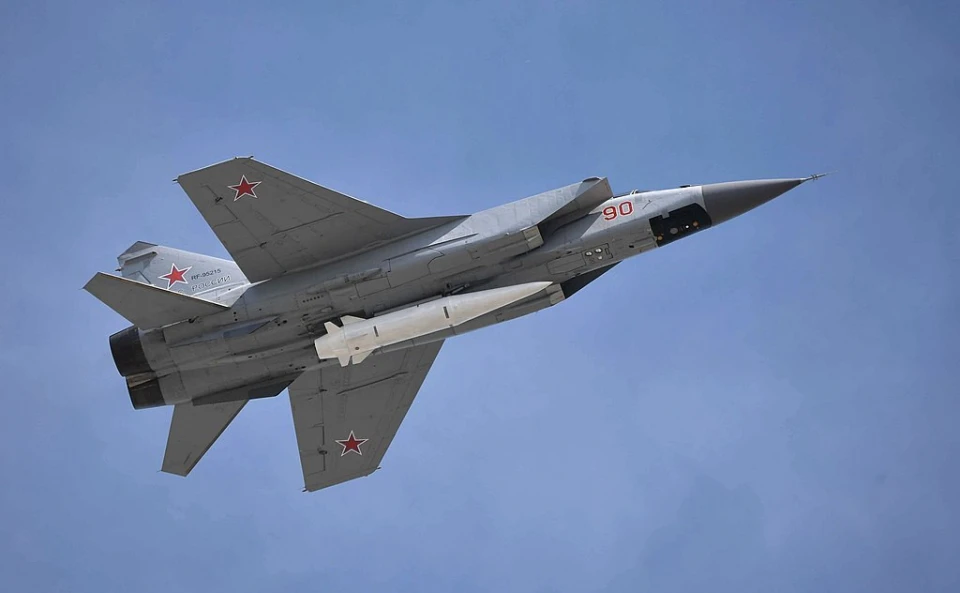
Having made Belarus dependent on Russia's political and economic will, Vladimir Putin also began to impose his larger army on Belarusians. In September 2021, large-scale joint Belarusian-Russian military exercises called Zapad-2021 began in Belarus. These maneuvers involved 200,000 troops. Even then, it was said that Putin was "testing the waters" to see how far he could take over Belarus in order to have a foothold for war with Ukraine and possibly NATO countries. In fact, the next exercise in early 2022, called Allied Resolve 2022, allowed the Russians to attack Ukraine from the north, crossing the Belarusian-Ukrainian border and coming close to Kyiv.
In March 2022, Belarusian politician and presidential candidate Sviatlana Tsikhanovskaya, at a meeting with EU ambassadors in Geneva, called on them to recognize Belarus as a country de facto temporarily occupied by the Russian Federation. Since April of last year, Belarus has been conducting undisputed joint military exercises with the Russians, which are continuing on a regular basis. That is, in fact, Belarus is indeed partially occupied by Russian soldiers who use Belarusian military infrastructure for their own purposes. In particular, airfields where Russian aircraft are based and training grounds where Russian recruits are trained. In addition, in the summer, Belarusian territory became a place of exile for Wagner PMC mercenaries, after the short and unsuccessful uprising of Yevgeny Prigozhin. Interestingly, it was Alexander Lukashenko who allegedly agreed with Prigozhin to end the rebellion and invited his mercenaries to join him.
In general, Belarus has not only given its training grounds and airspace to Russia, but also helps with weapons. In addition to old tanks and armored personnel carriers that have been mothballed and are now being transferred to Russia, the Belarusian Armed Forces have a lot of ammunition of the same type used by the Russian army in the war against Ukraine. Moreover, the defense industry of Belarus is involved in the repair of Russian equipment damaged during the fighting. This was reported by the General Staff of Ukraine last year.
How strong is the Belarusian army?
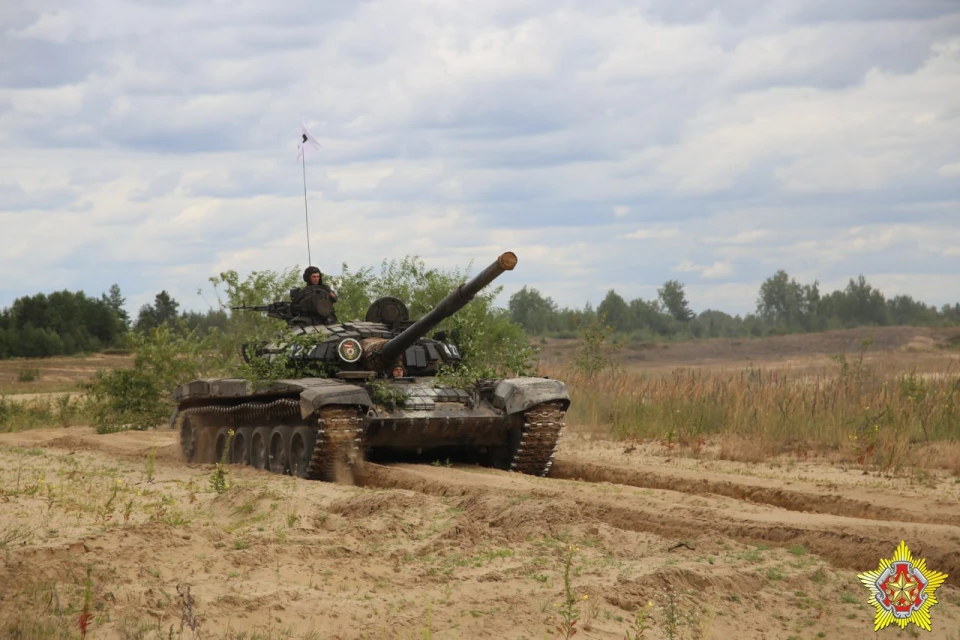
In 2023, experts ranked the Belarusian armed forces 60th among 145 countries in the Global Firepower Index, a global military power ranking compiled by the Global Firepower analytical company. It is positioned between countries such as Morocco, Kazakhstan, Slovakia, Bulgaria, Serbia, and Azerbaijan. By the way, according to this rating, the Ukrainian Armed Forces are in 15th place (with the United States, the Russian Federation, and China occupying the top three positions, respectively).
When the USSR collapsed, Belarus had 3,500 tanks, 3,800 armored vehicles, 1,500 pieces of artillery, almost 100 helicopters, and 200 fighter jets. However, the young state could not maintain such a powerful army, so the process of optimizing the army, disbanding brigades, and selling off equipment began. By 1996, the army had already been halved in size, with 85,000 troops. The reduction did not stop there, and the army was further halved before Russia's full-scale invasion of Ukraine.
At the beginning of 2022, according to open sources, the size of the Belarusian army was about 45,000 people. Last year, the Ukrainian General Staff reported that Lukashenko wanted to increase his army to 80,000 people as part of his announced creation of a southern operational command, which is still in the process of being formed. There are about 300,000 more people in the Belarusian reserve, as well as over 100,000 people in the territorial defense troops.
The Armed Forces of Belarus include the Land Forces, the Air Force, and the Air Defense Forces. The Special Operations Forces (SOF) are also subordinated to the General Staff, and there are also special troops (services) and logistics bodies. In 2023, Belarus re-acquired nuclear weapons that had disappeared from the country, as well as from Ukraine, in 1996. In the summer, US intelligence reported that the first batches of tactical nuclear weapons had arrived in the country. However, it should be understood that these weapons are fully under the control of the Russian command, and not transferred to the control of Belarusians.
The largest group of troops is the ground unit of the Belarusian army, which consists of four mechanized brigades, two paratrooper brigades, and one special forces brigade. There is also a rocket artillery brigade and a rocket artillery regiment, two artillery brigades, a missile brigade, and one mixed artillery group. All these forces together number over 31,000 people, i.e., 2/3 of the Armed Forces of Belarus.
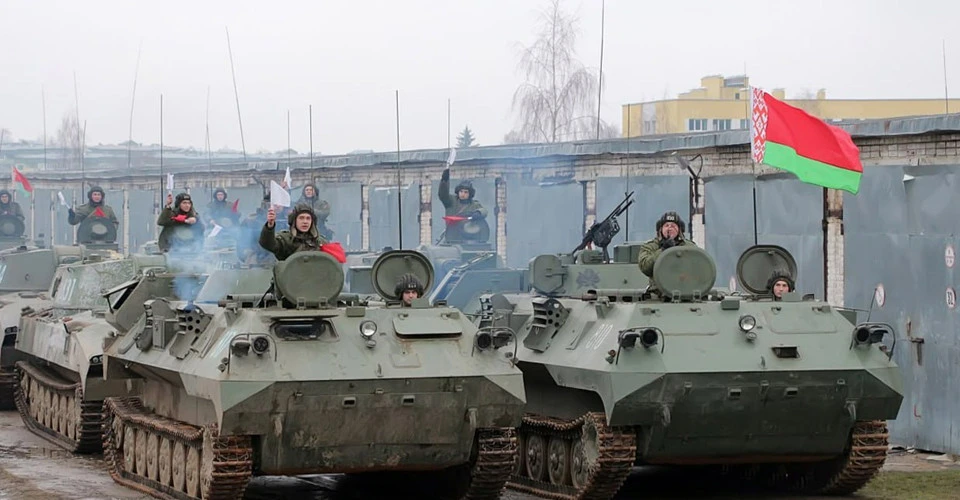
Belarus has a large amount of military equipment, but the vast majority of it is Soviet-made, having undergone limited modernization or even only routine repairs.
According to official data, as of the beginning of 2022, the Belarusian army had about 1,300 tanks in service, 90% of which were T-72Bs that entered service with the Soviet army in the mid-1980s. That is, they are already about 40 years old. However, the military portal Military Balance cited much more modest figures, saying that only about 550 tanks of the Armed Forces of Belarus are still serviceable. In addition to the outdated T-72Bs, Belarusians still have several dozen Russian T-72B3s (modernized versions of the T-72Bs that appeared in the Russian army 10 years ago).
As for armored vehicles, Belarus has over 900 BMP-2s (introduced to the Soviet army in the early 1980s) and over 130 BRM-1s (developed in the 1960s). There are also two dozen Caiman reconnaissance armored vehicles and more than fifty MT-LB tractors.
The Belarusian Armed Forces have a fairly powerful artillery unit. The artillery includes almost 600 artillery systems, including seven dozen towed 152 mm Msta-B howitzers, 125 122 mm Gvozdika self-propelled artillery systems, 125 152 mm 2S3 Acatsia self-propelled artillery systems, 70 152 mm Giatsint self-propelled artillery systems, and 10 152 mm Msta-S units. Multiple launch rocket systems - over 120 BM-21 Grad and 20 Uragan systems and dozens of Tochka U missile systems. The only more modern piece of equipment among the artillery is the Polonez MLRS, which Belarusians developed together with the Chinese a decade ago. The system has eight guided missiles that can fly up to 200 kilometers. However, Belarus has fewer such systems than fingers on its hand.
As for the Belarusian air force, it is insignificant. At the beginning of 2021, there were about 40 MiG-29 fighter jets, a third of which were upgraded to MiG-29BMs, which can attack ground targets and refuel in the air. Belarus has about 25 Su-25 attack aircraft, as well as 11 Russian-made Yak-130 trainer aircraft and 10 Soviet L-39 trainer aircraft. In addition, there are a small number of An-26 and Il-76 transport aircraft, as well as Mi-8 and Mi-24 combat helicopters.
The air defense system is quite dense and consists of 200 anti-aircraft missile systems: S-300, Buk air defense systems (almost all of which Lukashenko sold to Azerbaijan in the mid-2010s), Osa, Strela-10, and Tor air defense systems. In addition, Belarus is covered by Russian Iskander missile systems, long-range S-400 missile systems, and Tor-M2 short-range air defense systems.
As for combat readiness, it should be emphasized that the Belarusian army has never participated in military operations either as a belligerent or as a peacekeeper. However, Belarusian troops have conducted a large number of joint exercises with Russian troops, so they are familiar with their warfare tactics.
Could Belarus attack Ukraine?
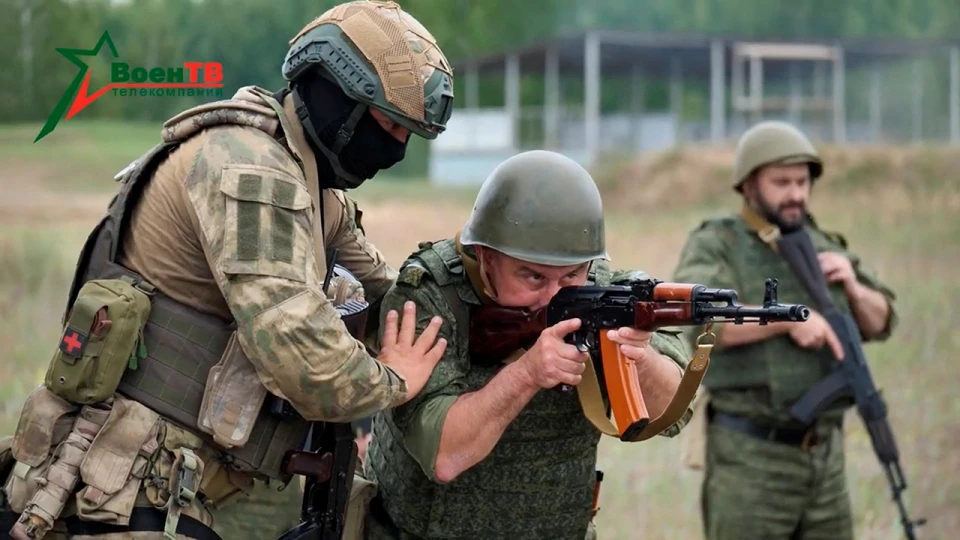
This issue has been a concern for Ukrainians since the beginning of the full-scale war. It was especially acute in the first half of 2022, when the Russians concentrated large forces in southern Belarus and, accordingly, northern Ukraine. But after driving the invaders out of the Ukrainian capital, the Armed Forces of Ukraine securely closed this area.
Since then, there have been no attempts to attack Ukraine from Belarus, although experts have repeatedly said that this could happen and named several scenarios for an offensive: from a repeat of last year's offensive to the opening of a new direction in Volyn or Rivne to try to cut off the supply routes for Western weapons. The most likely scenario, however, was an attempt to use Belarusian special forces for guerrilla warfare in Ukraine. So far, however, none of this has happened.
The Belarusian regime is centered around one person - President Alexander Lukashenko. Over the years of ruling and communicating with Putin, he has learned to maneuver and play his game, not forgetting the main thing - maintaining his power in the country. That is why the Belarusian dictator's rhetoric is variable, ranging from "I'll show you where the attack on Belarus was being prepared from" to assurances that the Belarusian army will never attack the "brothers" of Ukrainians. Lukashenko understands that Belarusian society, unlike Russians, has never been taught to perceive Ukrainians as enemies, so it would be difficult for Belarusians to understand why their soldiers should die on the territory of a foreign country. Given that since the mass unrest in 2020, Lukashenko does not feel in absolute control of the country, he does not seek additional problems and internal conflicts that could eventually cost him power or even his life. Therefore, the self-proclaimed president of Belarus was able to freeze the issue of the Belarusian military's participation in the war with Ukraine. However, how long he will be able to do so is an open question. After all, Putin is not going to stop his bloody war, dreaming of restoring a new version of the Soviet Union.
In any case, the Ukrainian Armed Forces also do re;y on Lukashenko's diplomatic skills, and have built a powerful system of fortifications along the entire length of the border with Belarus. Ukrainian military assures that the northern border is mined, and artillery and mobile fire groups are on alert. Earlier this year, Lieutenant General Oleksandr Pavliuk, former commander of the capital's defense forces, said that in the event of an attack by Belarusians, Ukrainian troops would not let them in but would keep them close to the border.
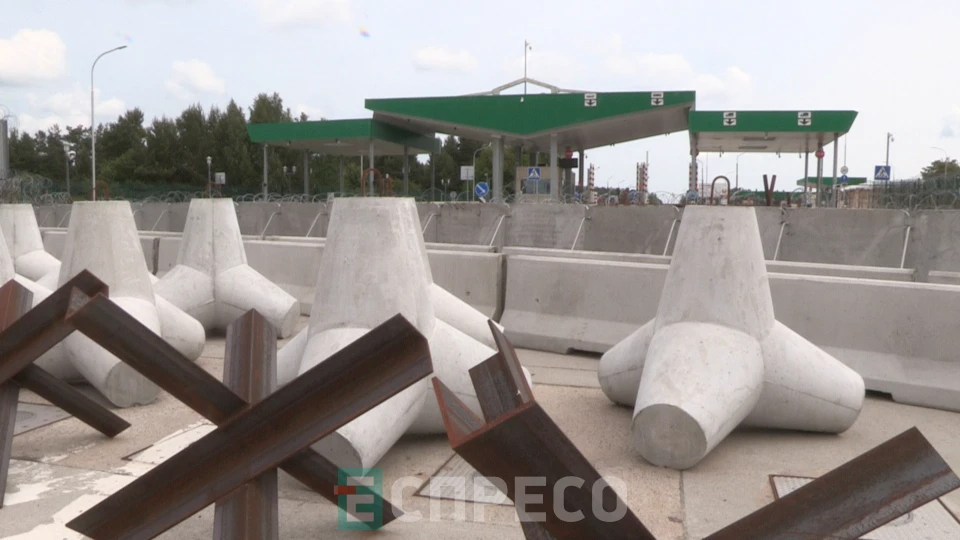
At the end of last year, Ukrainian intelligence chief Kyrylo Budanov said that the likelihood of a repeat offensive from Belarus was low, although such a possibility remained. However, at the beginning of this year, there were about 10,000 Russian troops in Belarus, which is not enough for an attack. This year, the number of Russian troops in Belarus has further decreased. At the end of November, the State Border Guard Service of Ukraine assessed the likelihood of an attack by Belarusians as extremely low. Border guards are constantly monitoring the maneuvers of Belarusians and Russians and keeping their finger on the pulse.
"The threat of a second invasion from Belarus is currently low, but it is the duty of the border guards to be prepared for any scenario. They are constantly working to strengthen and equip additional positions. The border crossing points with Belarus are also currently closed, as they are mined," the State Border Guard Service said.
So, for now, Belarus continues to pose a threat to Ukrainian security, providing military infrastructure to the Russians for the war with Ukraine and performing the task of pulling Ukrainian forces away from the front line, scaring its military with constant exercises near the border and the changing rhetoric of its permanent dictator.
- News













































